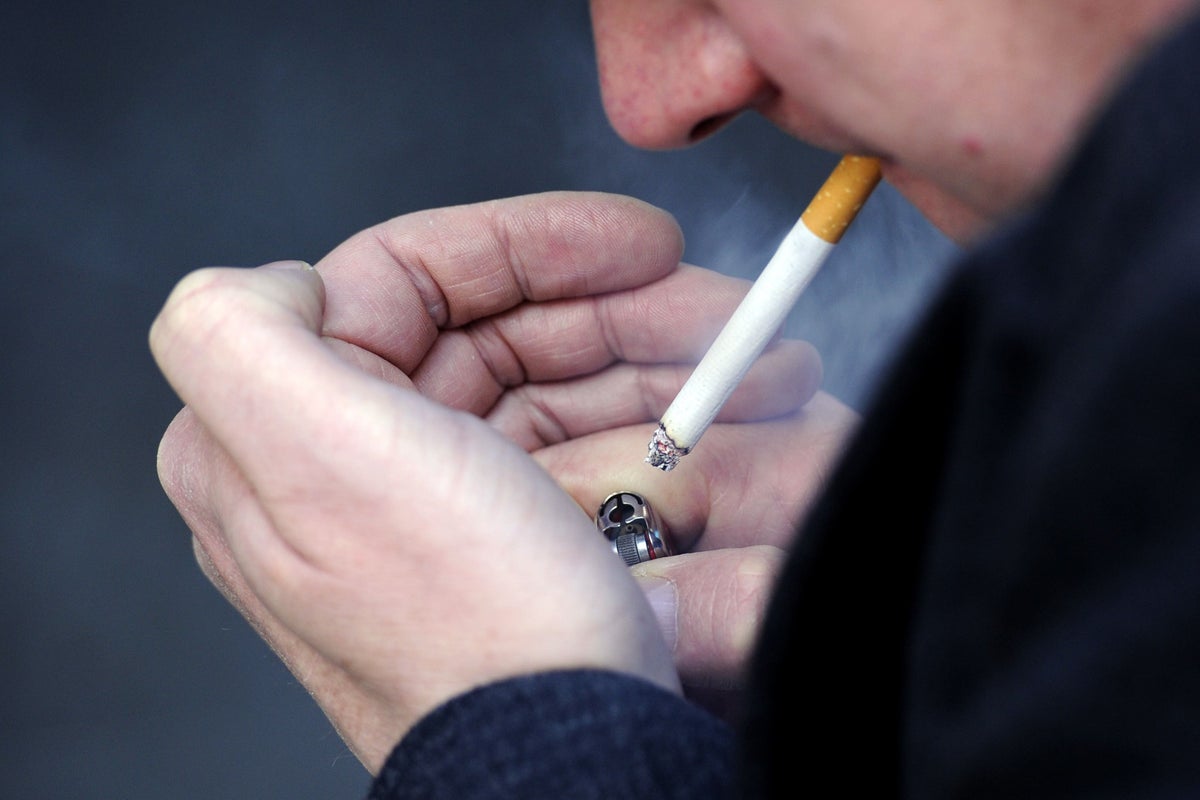
The areas in the UK with the highest prevalence of smoking have been revealed.
Data from the Office of National Statisitics show how many people in the UK smoke cigarettes and e-cigerattes as part of the annual population survey.
It comes after Rishi Sunak announced plans for a UK smoking ban by phasing out the sale of cigarettes for the next generation.
Mid Devon leads as the local authority with the highest percentage of adults smokers - 25.1 per cent - closely followed by Hastings (23.7%) and Lincoln (23.5%).
At the other end of the scale, London borough Richmond upon Thames has a smoking prevalence of 6.2 per cent - the lowest number of adult smokers in England.
Statistics from NHS show Richmond upon Thames council spends an average of £2,423 per person on Stop Smoking Services, and the total cost for the delivery of stop-smoking services from April to June 2023 was found to be £21,814 for the council.
Gateshead took the top spot with an average of £43,190 spent per person quitting smoking, including pharmacotherapies. While it is among the highest number of self-reported successful quitters, the total spending costs are almost double that of the second-largest spending local authority, Buckinghamshire.
The Independent has put together this interactive map below which shows smoking prevalence across the UK separated into local and unitary authority areas.
Darker areas on the map show the biggest smoking hotspots and lighter areas show the local authorities with the smallest percentage of smokers.
King Charles announced the plan for a UK smoking ban at State Opening of Parliament in November, by raising the legal smoking age by one year, every year meaning a 14-year-old today will never legally be able to buy a cigarette. He said the legislation will create a “smoke-free generation”.
The prime minister had previously announced the plans at the 2023 Conservative Party conference, detailing the government’s plan to phase out the sale of cigarettes for the next generation in what would be a major step forward for overall health in the UK.
Mr Sunak also pledged to crack down on the sale of disposable vapes to children, saying more must be done to restrict their availability to under-18s.
The Prime Minister said in his speech: “Four in five smokers have started by the time they’re 20, later the vast majority try to quit but many fail because they’re addicted and they wish they had never taken up the habit in the first place.
“If we could break that cycle - if we could stop the start - then we would be on our way to ending the biggest cause of preventable death and disease in our country.
“I propose that in future we raise the smoking age by one year every year. That means a 14-year-old today will never legally be sold a cigarette and that they and their generation can grow up smoke free.”
Rishi Sunak announced plans to cut smoking for the younger generation— (PA)
The legal age for buying cigarettes and other tobacco products across the UK is 18, having been raised from 16 in 2007 by the last Labour government.
It is expected that the plan would follow a similar format to the measures introduced in New Zealand last December, when they banned the sale of tobacco to anyone born on or after 1 January 2009.
Last year a major review led by Dr Javed Khan said that without further action, England would miss the target by at least seven years, with the poorest areas in society not set to meet the target until 2044. He also put the annual cost to society of smoking at about £17bn – £2.4bn to the NHS alone.
Dr Khan backed proposals to increase the age of sale in his report, and recommended “increasing the age of sale from 18, by one year, every year until no one can buy a tobacco product in this country”.
Navin Khosla, Pharmacist at NowPatient said: “While it is difficult to pinpoint why cities in the north have a higher smoking prevalence than the south, data from the NHS Stop Smoking service has revealed that the north-east saw over 580 (per 100,000) smokers report successfully quitting the habit, highlighting the efforts being made in the region to reduce these overriding figures.
“Similarly, the north-west saw over 440 (per 100,000) smokers reporting a successful end to their habit. Despite the lower smoking figures in the south of England, 441 (per 100,000) smokers reported quitting smoking, suggesting an active effort despite the lower prevalence of smokers overall.
“It is important to remember that nicotine is highly addictive and therefore quitting the habit can be a difficult feat, therefore seeing these figures for those quitting is extremely promising and should be commended.”







